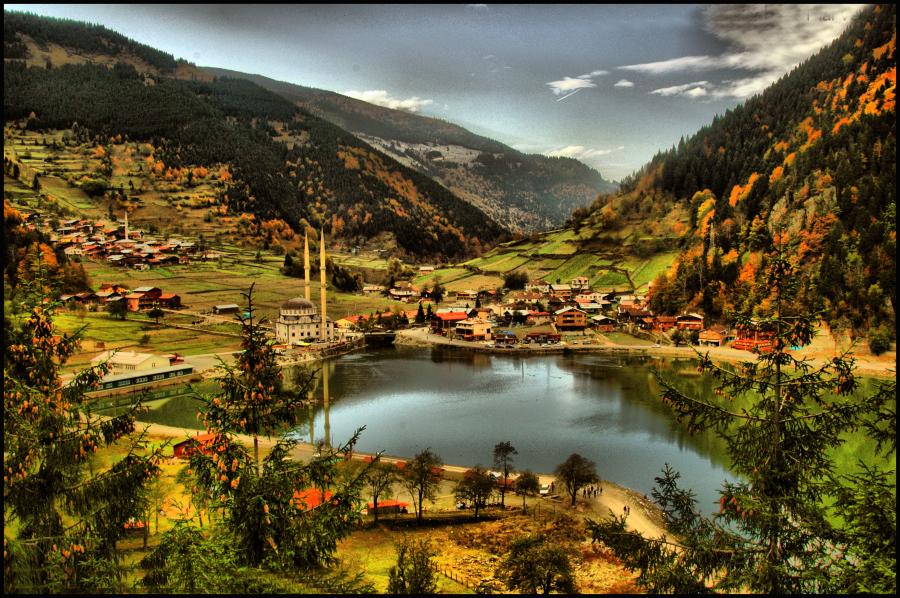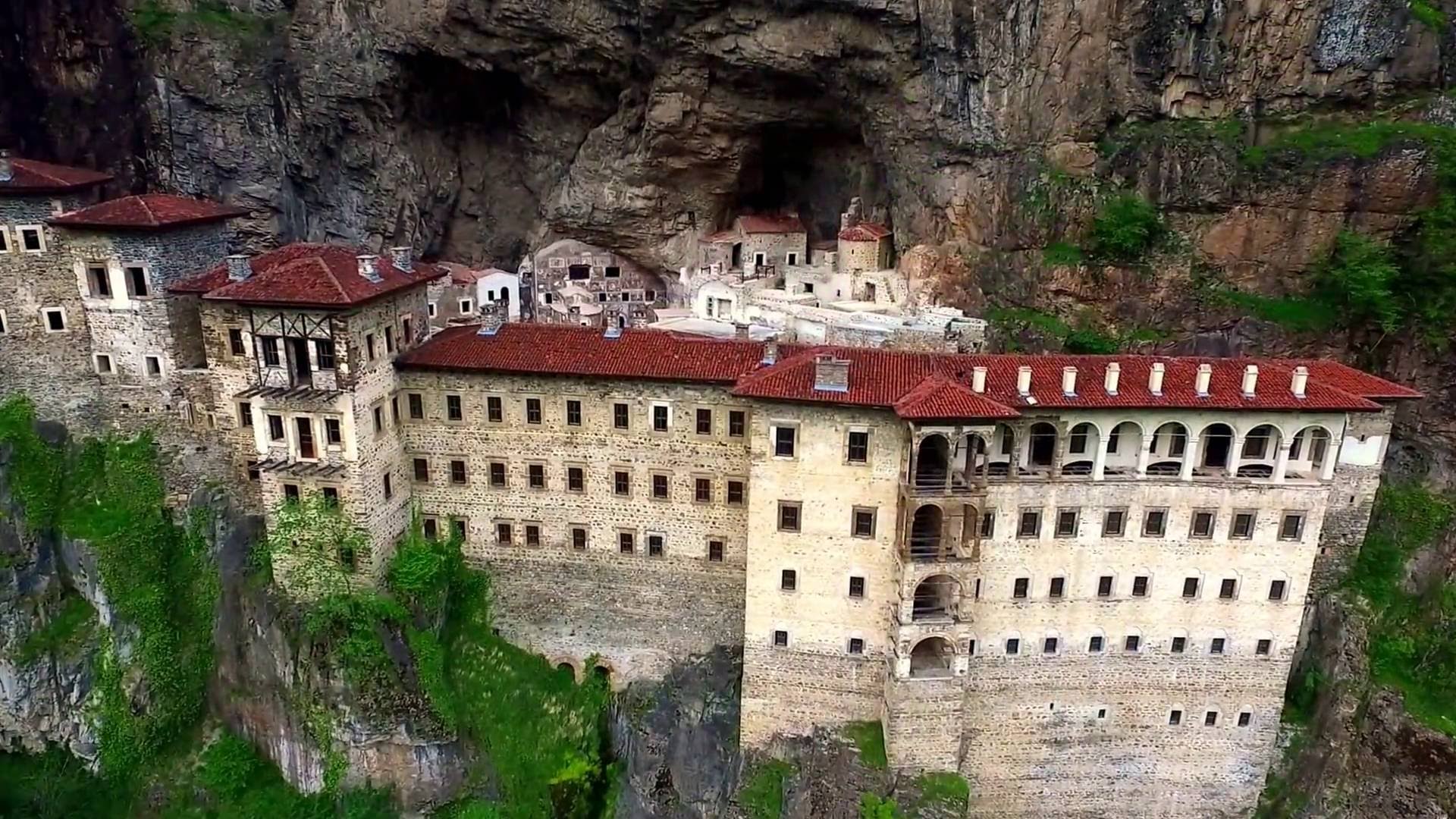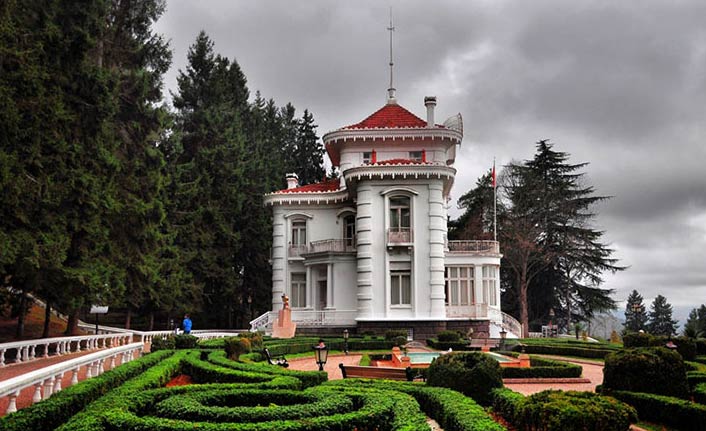CITY of TRABZON
Trabzon is one of the major cities of Turkey and the biggest one in the Eastern Black Sea region. It has an area of 4,664 km2. Due to the rainy climate even in the summer months, it has lots of green forests and mountains with many rivers and highlands. There are major roads connecting Trabzon to other cities, a big harbor for international shipping traffic in the Black Sea, and an international airport. The city is famous for its fish, football (soccer) team (Trabzonspor), and the Sumela Monastery.
Trabzon has been an important meeting point for international trade and cultural exchange due to its strategic location which controls the east-west (Asia-Europe) and north-south (Russia-Middle East) trading routes. Its population is around 350.000 in city centre. Trabzon has a very rich flora, and about 440 endemic plants thrive in the region. The region is under the influence of the Black Sea climate: the winters are cool but humid, and summers are temperate. As a peculiarity of the Black Sea climate there is a high probability of rain throughout the year. Average temperature in September is around 20°C (according to 1981-2010 period). The currency is Turkish Lira. Foreign currency and travelers check can be exchanged in banks, hotels and ex-change offices. Many shops will accept the major credit cards.
THINGS TO DO IN TRABZON
Uzun Göl (The Long Lake)
Uzungöl is actually located just outside of Trabzon, but close enough that this is a place that any traveler who wants to say they saw the sights, should check out. The lake is one of the longest in the area and is deep enough to take a dip. There are also little chateaus and places to see and stay around the area. There’s nothing quite like spending the night in this scenic spot and watching the sun come up over the lake.

Sumela Monastery
Situated in a very beautiful and natural setting on the slopes of the Zigana Mountains, Sumela Monastery built in the 14th century is nestled into the side of rocks in a famous valley in Maçka district, only 50 kilometers away from Trabzon. The setting is 1200 meters above the sea level.
The Greek Orthodox Church of the Assumption of the Virgin Mary (Panagia)and the large monastery complex had 5 floors and a total of 72 rooms. The upper floor was used as a gallery and a lookout post. The whole building was full of frescoes and the wall paintings. The large part of the building was hewn out of the rock. It stands in front of a beautiful valley scenery and sharp rocky mountains behind.
Today there is a tiny road to the Monastery which you can walk uphill or take a van, after which you have to walk a steep path and climb some steps to reach the building. Due to restorations and geological studies, the monastery might be closed to visitors for some time.

Atatürk Pavillion
It was built in Soğuksu, one of the recreation spots of Trabzon in 1890 by Konstantin Kabayandis- a banker from Trabzon as a summer house. On 15th September, 1924 Atatürk visited and liked the pavilion on his first visit to Trabzon.
In line with Constant Province Council's decision in chapter 361, dated 18.05.1931, the pavilion was given to Atatürk as a gift by the people of Trabzon.
Contrary to the documented sources till now, Atatürk stayed here only on his last visit to Trabzon from 10th to 12th June, 1937, also made a decision which is very important for our history, and gave his property to the treasure and sent it to Prime Minister İnönü by a telegram.
It was bought from his sister -Makbule Hanım after his death on 6th April, 1943 by Trabzon Municipality, was decorated and opened as Atatürk Museum.
The building has some traces from European Architecture and has four floors.
Side features and the decoration of the building have the features of European Architect. In the entrance floor, there is Atatürk's living room, dining room and guest room. On the first floor, are Atatürk's bedroom, the rooms for his assistant and guard. On the second floor where we go through the wooden stairs, there are two big rooms which are opened to a big room.

Hagia Sophia (Ayasofya)
It was built in covered Greek cross architecture during the reign of King Manuel I Kommenos in 13th century. Muslim Seljuk stone workers also worked for the construction of Hagia Sophia Church and the church continued its service until 1670 after Ottomans invaded the region. It was converted into a mosque in 1670 and served as a storage and hospital during World War I. Later it served as a mosqueagain. The chapel in the north of the church is older and the bell tower and was built in 1427. Hagia Sophia Church was converted into a museum in 1964 and then into a mosque again in 2013. It is located at three kilometers west of the city. It is not to be confused with Hagia Sophia Museum in Istanbul.

You can have a look at more about things to do in Trabzon via tripadvisor:
https://www.tripadvisor.com/Attractions-g298039-Activities-Trabzon_Turkish_Black_Sea_Coast.html
12 January 2022